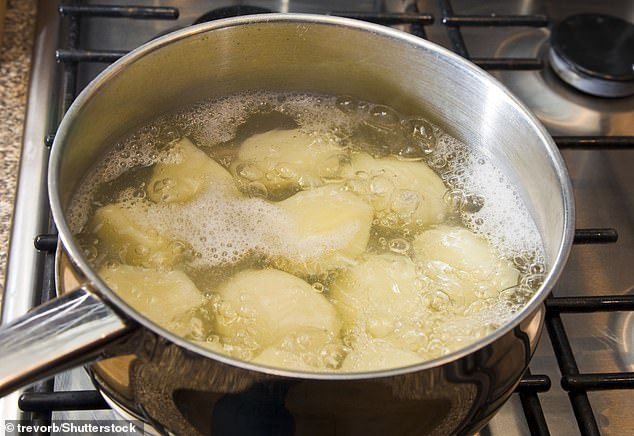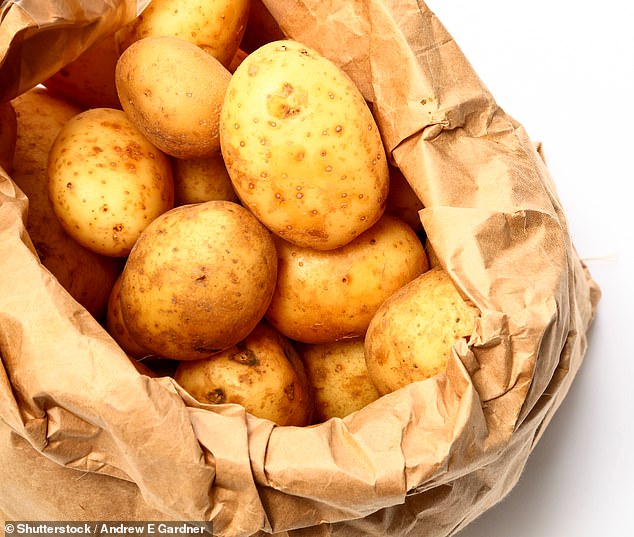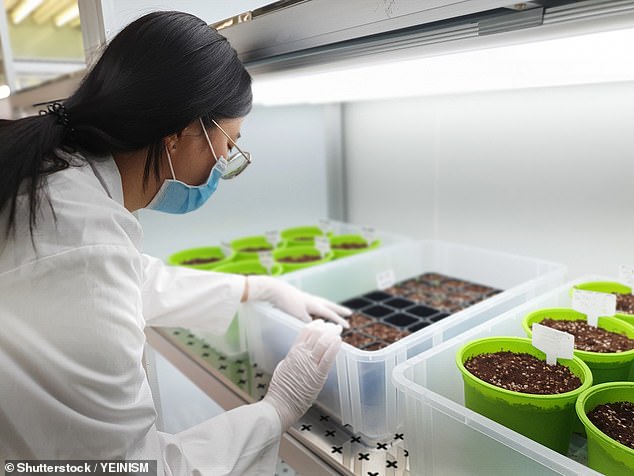They are a versatile dinner option and are full of fiber.
But waiting for the humble potato to cook must be one of the frustrating experiences for any home chef.
Fortunately, those days could soon be over, as British scientists are working on a “super potato” that cooks as quickly as pasta and rice.
Using gene editing, scientists plan to make adjustments to the part of the potato’s DNA that controls how quickly the plant’s cells soften.
Experts hope that gene-edited potatoes will be grown commercially before ending up on supermarket shelves.

Experts plan to use the famous gene editing tool CRISPR, which acts like ‘molecular scissors’ that can cut the two strands of DNA at a specific location


Sales of potatoes in Britain are falling because consumers want carbohydrates that cook much faster, such as rice and pasta.
The new project is led by Lincoln-based agritech company B-hive Innovations, alongside Branston Potatoes and Scotland’s James Hutton Institute.
According to the partners, potato sales in Britain are falling because consumers want carbohydrates that cook much faster, such as rice and pasta.
A key focus will be the Maris Piper potato, known for its pale golden skin and creamy white flesh, considered an “all-rounder” because it is good for making chips, roasts and more.
The project, codenamed TuberGene, will also address another major problem for potato growers: bruising.
Around five million tonnes of potatoes are produced in the UK each year, but a large number do not meet commercial specifications, causing food waste.
“The UK potato industry faces significant challenges and it is vital that we find innovative solutions to ensure its long-term viability,” said Dr Andy Gill, CEO of B-hive Innovations.
“This project represents an important step forward in our efforts to address issues such as bruise-related losses and changing consumer preferences.”


The Maris Piper (pictured) is the perfect potato for roasting thanks to its higher levels of amylose.
Making small changes to a specific gene location within potato DNA can introduce desirable traits that would otherwise take years to develop.
In addition to potatoes cooking faster and being less likely to bruise, these changes could also include greater disease resistance, better nutritional value, or a longer shelf life.
Experts plan to use the famous gene editing tool CRISPR, which acts like “molecular scissors” that can cut the two strands of DNA at a specific location.
“Gene editing and other precision breeding technologies offer unprecedented opportunities to rapidly improve potato traits, meeting the need to respond quickly to changing consumer preferences,” said Dr. Rob Hancock, research scientist at the Institute. James Hutton.
“By focusing on specific genes responsible for traits such as bruising susceptibility and cooking times, we can create varieties that meet the needs of both producers and consumers.”
It follows new legislation passed by the UK government in 2023 allowing the commercial development of gene-edited crops.
Environment Secretary George Eustice has previously insisted that GM products would not need to be advertised as such because they are “fundamentally natural”.
However, gene-edited foods remain controversial because, according to some critics, there is no record of their safe and reliable use.
Although they are two terms that are often confused, genetic editing (GE) is different from genetic modification (GM).


Gene editing uses specialized enzymes to cut DNA at specific points. These changes must be equivalent to those that could have been made using traditional methods of plant or animal reproduction (file photo)
GM is the process of changing the DNA of an organism, such as a bacteria, plant or animal, by introducing DNA elements from a different organism.
Meanwhile, transgenic involves changing an organism’s DNA through alterations to its genetic code, without any “foreign” DNA from other species.
According to the Food Standards Agency, genetically modified foods are only authorized for sale in the UK if they are considered to pose no health risk or mislead consumers.
Additionally, if GM foods have less nutritional value than their non-GM counterparts, they will not be allowed to be sold.
